
KAI Kaga is a traditional onsen ryokan in Kaga, breathing new life into the legacy of Shiroganeya, a historic ryokan that has welcomed numerous cultural figures since its founding in 1624. Its traditional architectural wing, including the front hall, and the Tearoom are registered as tangible cultural properties of Japan. Guests can immerse themselves in Kaga culture through various experiences, including KAI Signature Rooms adorned with traditional crafts such as Kaga Yuzen and mizuhiki, cuisine inspired by the culinary philosophy of gourmet Rosanjin Kitaoji, and dynamic Lion Dance performances.
KAI Signature Rooms: Adorned with Kaga Yuzen and Other Traditional Crafts
All 48 guest rooms feature a fusion of tradition and modernity, with low beds and sofas. Throughout a stay, the essence of Kaga's traditional crafts can be felt, with elements of the four representative traditional crafts of the Ishikawa and Kanazawa areas: Kutani ware, Yamanaka lacquerware, mizuhiki, and Kaga Yuzen. Each room's nameplate, key holder, and tea utensils are adorned with original Kutani ware, specially crafted by local artisans for KAI Kaga. The interiors feature Kutani ware design tiles and wall hangings with Yamanaka lacquerware artwork. Mizuhiki adorning the shoji screens emit an elegant glow, and in the bedroom, Kaga Yuzen-inspired panels gracefully enhance the time before sleep. Additionally, 18 of the guest rooms are equipped with Outdoor hot springs, allowing guests to enjoy a hot spring soak at their leisure.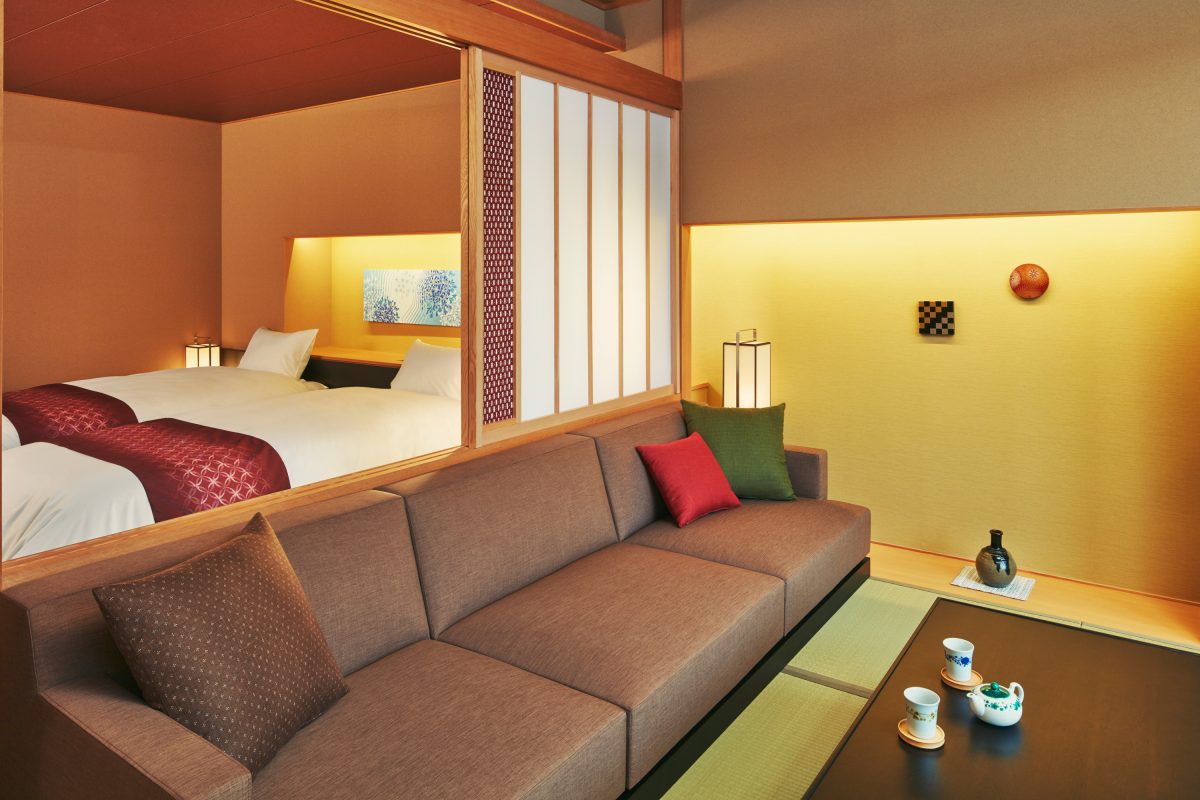 KAI Signature Rooms
KAI Signature Rooms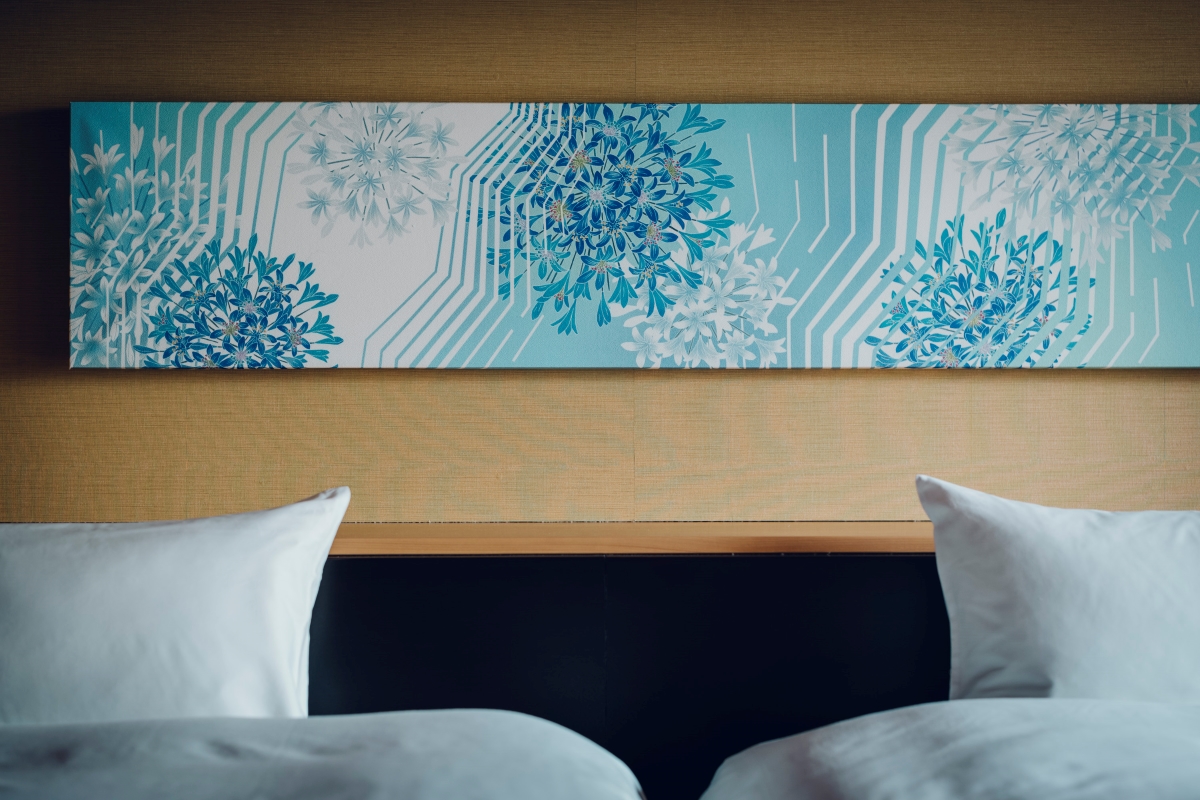 Kaga Yuzen panel headboard
Kaga Yuzen panel headboard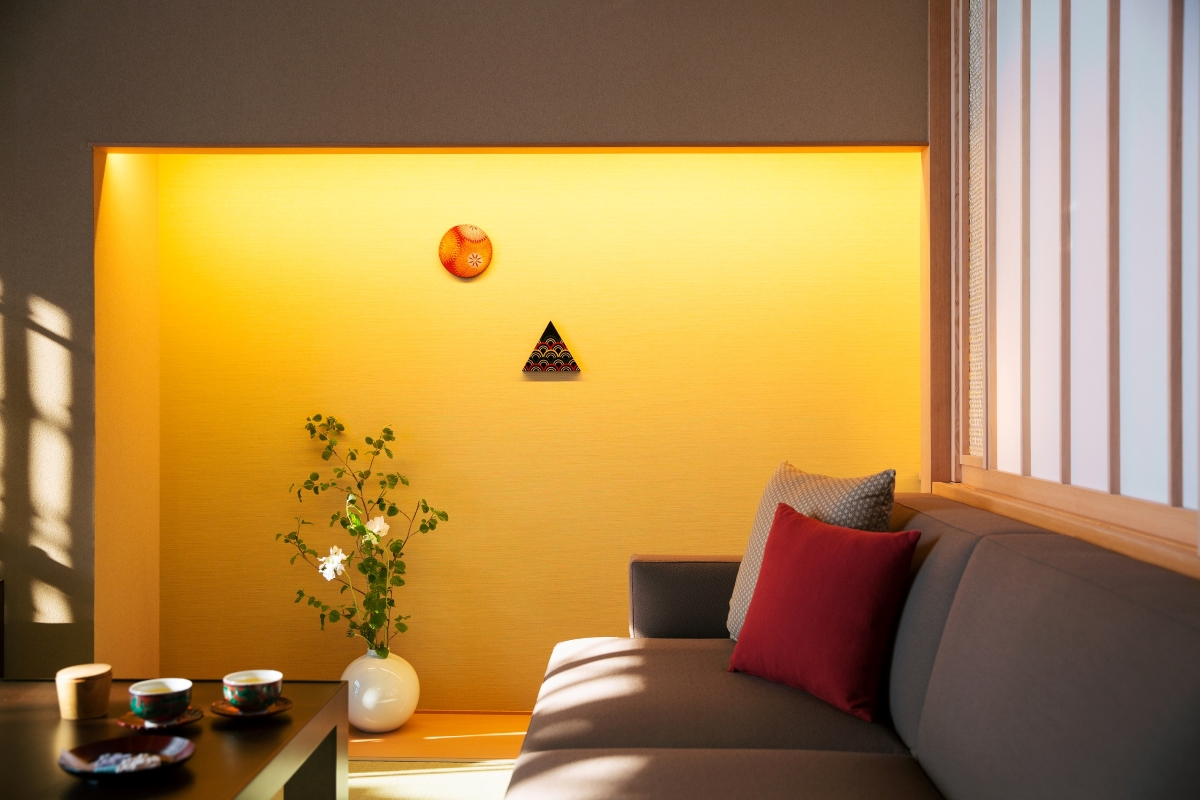 Kutani ware tiles and Yamanaka lacquerware artwork
Kutani ware tiles and Yamanaka lacquerware artwork
Architecture: An Evocative Ambiance Welcomes Guests with Bengara-goshi and Waku-no-uchi
The traditional architectural wing, featuring striking bengara-goshi (red-ocher lattice), is a registered tangible cultural property of Japan. A large-scale renovation was carried out from March 2014 to December 2015. The eight-story guest room building subsequently constructed behind it was designed to harmonize with the aesthetic of the traditional architecture.
Bengara-goshi: A traditional lattice structure made of finely arranged vertical and horizontal wooden slats, designed to allow visibility from inside while maintaining privacy from the outside. It is called bengara-goshi as bengara (red iron oxide pigment) is used for coloring, which also serves as a preservative.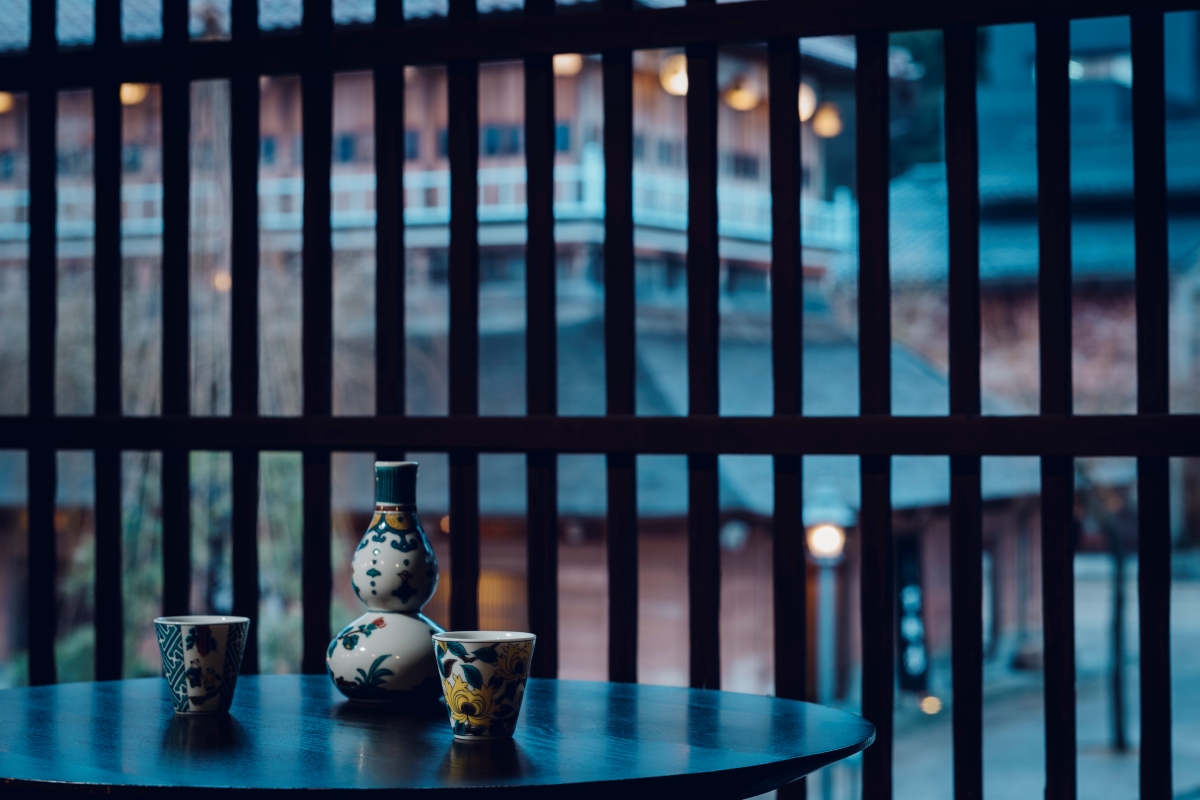
Waku-no-uchi: A traditional construction method that uses thick central pillars and large log beams assembled without any metal fittings. It is difficult to reproduce with the same materials today, making it highly valuable. This architectural technique is prominently displayed in the front hall.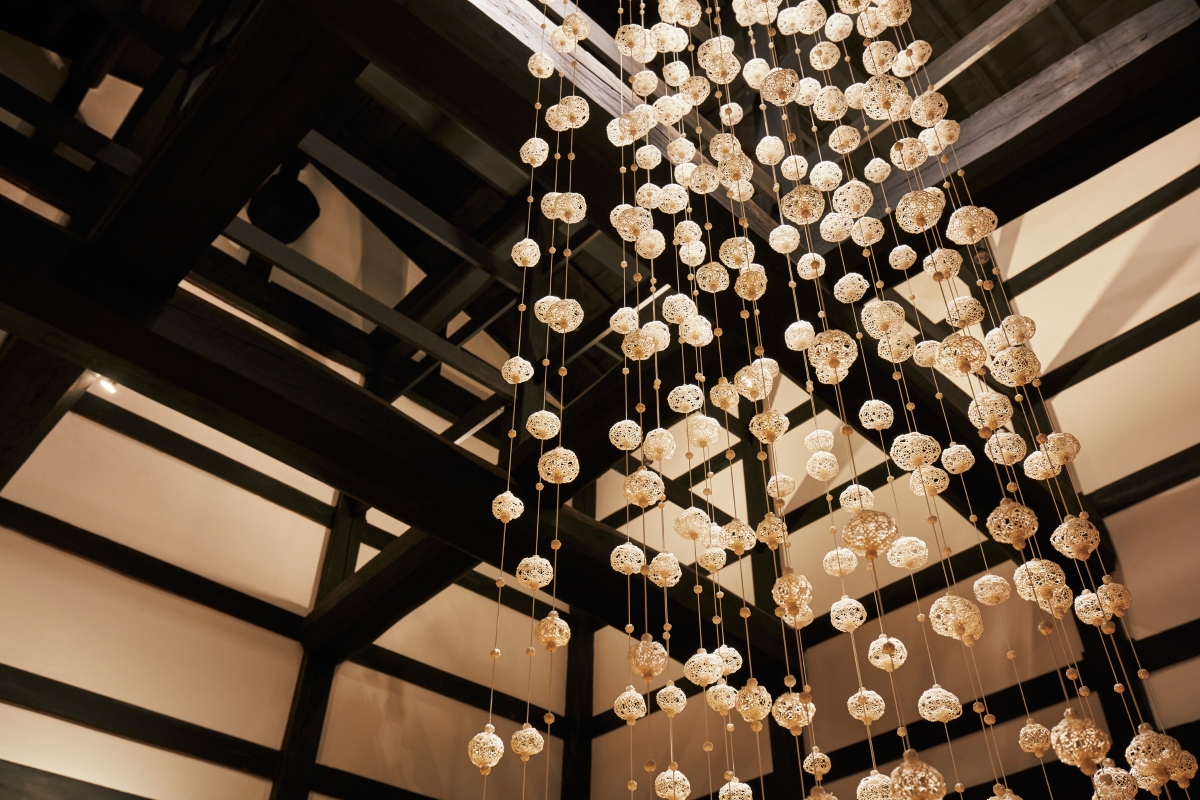
About Registered Tangible Cultural Properties of Japan
The system for registered tangible cultural properties was established under the Cultural Properties Protection Act with the aim of preserving cultural properties at risk of being lost due to recent land development and societal changes. To be registered, a structure must be at least 50 years old and satisfy one of three criteria: "contributing to the historical landscape of the country," "serving as a model for architectural design," or "difficult to reproduce easily." At KAI Kaga, two structures are registered: the traditional architectural wing and the Tearoom "Shian."
Cuisine: Culinary Art Inspired by Rosanjin's Philosophy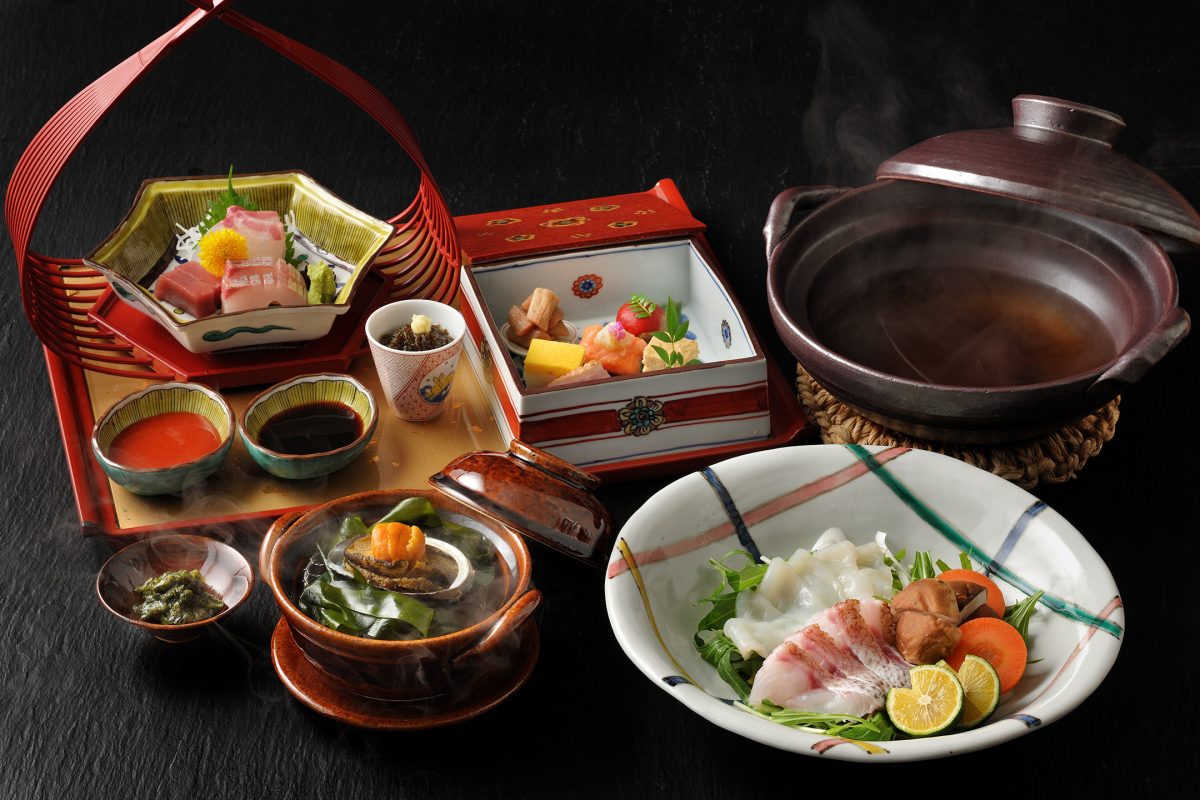

At KAI Kaga, the culinary philosophy of Rosanjin Kitaoji, a renowned gourmet with a connection to this ryokan who famously declared "tableware is the kimono of cuisine," takes center stage. This ethos inspires a theme of "Marriage of Tableware and Cuisine." Guests are invited to savor the seasonal delights of Hokuriku, presented on exquisite Kutani ware and Yamanaka lacquerware, both traditional crafts of this region. From spring through autumn, dishes feature fresh blackthroat seaperch and abalone. With the lifting of the fishing ban in autumn, snow crab becomes a highlight. A signature on the crab KAI Local Flavors menu is the "Shimenawa Steamed Crab"—a truly dynamic dish where live crab is steamed wrapped in ropes soaked in saltwater.
Kintsugi Repair Workshop: The First Dedicated Workshop in an Onsen Ryokan
Kutani ware, a local traditional craft, is a precious ceramic known for its magnificent decorations painted with five vibrant glazes—red, green, yellow, purple, and Prussian blue—on a white ceramic base. At KAI Kaga, Kutani ware is used for dinner and breakfast tableware, as well as for tea utensils in the guest rooms. When these Kutani ware pieces chip or break, staff members have been actively restoring them through kintsugi (golden joinery) by hand. In April 2023, the "Kintsugi Repair Workshop" was opened, making the repair process public. In addition to providing explanations of kintsugi to guests, the "Kintsugi Iroha" experience, where guests can participate in the repair process, is also offered. As of March 2024, over 1,600 guests have participated in the experience.
 Kintsugi Repair Workshop
Kintsugi Repair Workshop 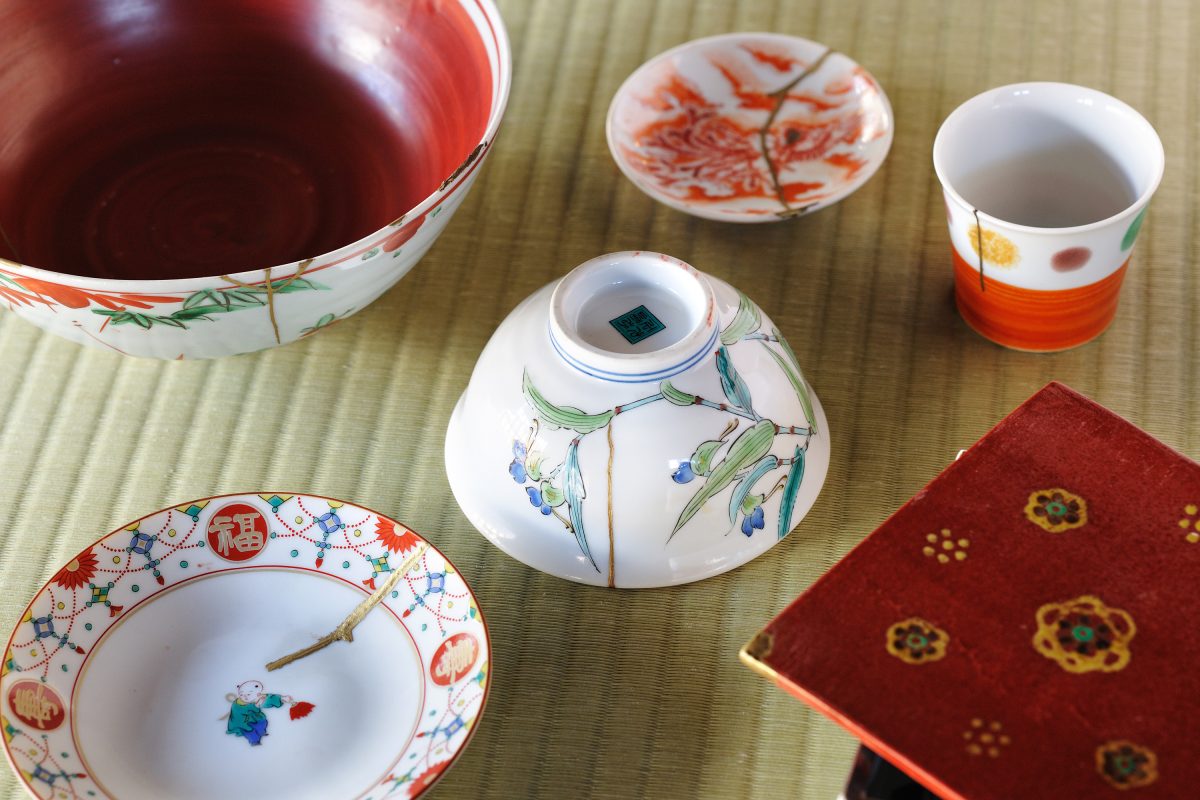 Various pieces repaired with Kintsugi
Various pieces repaired with Kintsugi 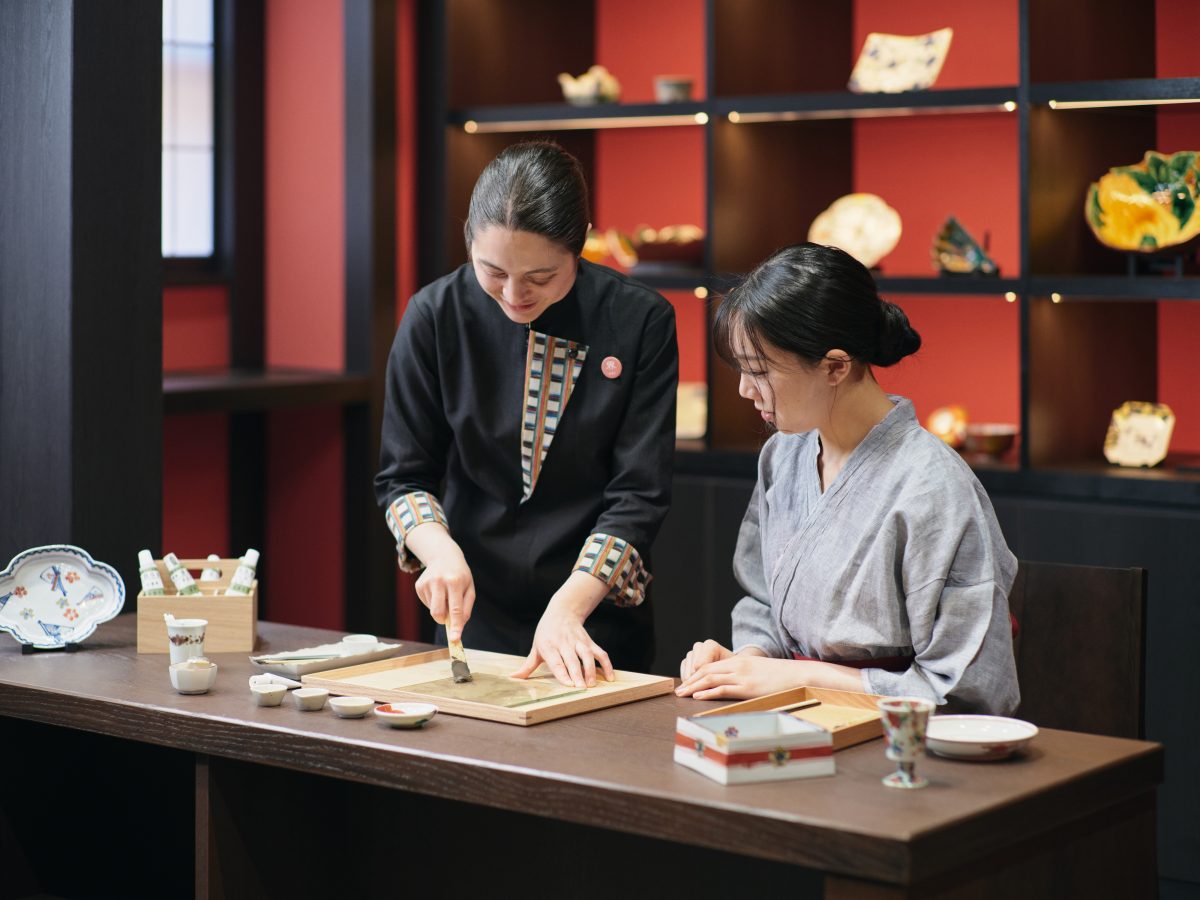 ABC of Kintsugi
ABC of Kintsugi
Overview of KAI Kaga
Blending tradition and modernity, KAI Kaga features guest rooms adorned with traditional crafts such as Kaga Yuzen and mizuhiki, alongside staff performances of the Kaga Lion Dance. Culinary offerings celebrate the "Marriage of Tableware and Cuisine," presenting seasonal kaiseki courses on exquisite Yamanaka lacquerware and Kutani ware. Expect premium Sea of Japan seafood like blackthroat seaperch, and, in season, freshly available crab. The "Shimenawa Steamed Crab" remains a dynamic and cherished signature dish.
Address: 18-47 Yamashiro Onsen, Kaga, Ishikawa
Number of Rooms: 48
Check-in: 3:00 pm / Check-out: 12:00 pm
Starting Room Rate: Starts from 31,000 JPY per night (per person in a 2-person room, includes tax and service charge, breakfast and dinner)
Access:
- By Train: Approximately 10 minutes by car from JR Kagaonsen Station.
- By Car: Approximately 15 minutes from Kaga Interchange on the Hokuriku Expressway.
URL: https://hoshinoresorts.com/en/hotels/kaikaga/
About KAI Brand
Onsen Ryokan loved by local and overseas travelers
KAI is a leading brand of onsen ryokan where every establishment offers a contemporary take on traditional Japanese inn whilst keeping Western comforts. KAI invites one to discover the multifaceted aspects of Japan through natural hot springs, exploration of local arts and entertainment, and classic Kaiseki-style course meals using local and seasonal flavors. Experience Washoku, Japanese cuisine, presented on carefully selected ceramics for full exposure to culinary sensations.
About Hoshino Resorts
Hoshino Resorts was first established as a Japanese inn/ryokan in 1914 in Karuizawa in Nagano Prefecture before it began the operation of other resorts in Japan. Today, it has evolved into a highly influential hotel management company and is run by 4th-generation family member Yoshiharu Hoshino. Providing a unique experience focused on the local charms of each destination and a high level of omotenashi, Japanese-style hospitality, the company has expanded rapidly out of Karuizawa since 2001 and now operates more than 55 accommodations both in and outside Japan with one of the following categories: luxury hotel brand "HOSHINOYA," hot spring ryokan brand "KAI," countryside resort hotel brand "RISONARE," city tourism hotel brand "OMO," free-spirited hotel brand "BEB," mountain hotel brand “LUCY,” or other unique lodgings.